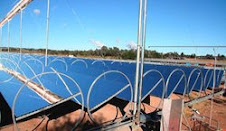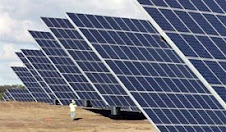By a measure of resources per capita, Canada is the richest nation earth, therefore we are duty-bound to promote clean renewable energy and phase out use of coal, oil and uranium as fuel sources.
The following article by top Canadian lawyer Clayton Ruby illustrates the danger of relying on 20th century style megaprojects. To paraphrase the story, "The Alberta oil sands alone emit more global warming pollutants than 145 of the 207 countries that track emissions!"
Peace 2 All,
Yuya Joe
Tar-sands development overwhelms climate goals
by Clayton Ruby, TheStar.com 16AUG08
Our Canadian "contribution" to global warming is the single largest and most destructive fossil fuel development in the world – the Alberta tar sands.
Shell Canada wants to build a new refinery in Sarnia to process oil from its share of the oil-sands mines in Alberta for use in gas tanks in Southern Ontario.
The industry says it knows how to capture and store its carbon, but despite earning record profits it's stalling by asking taxpayers to pick up the tab.
From the giant oil-sands tailings ponds you can now see from space, to the pollution from its refineries, the industry knows how to clean up its own toxic mess. But it doesn't. Nor are governments requiring big oil to clean up.
The Harper "intensity target" system, which reduces emissions per unit of production while letting overall emissions rise freely on greater volume, was tailor-made to permit rapid expansion of the oil-sands development: reduce pollution per barrel of oil by 20 per cent, increase the number of barrels by 2,000 per cent. This is the mathematics of no hope whatsoever.
Why does this development have such a huge impact?
First, its sheer size. There are 207 countries that annually keep track of the amount of total global warming emissions they emit. The Alberta oil sands alone emit more of these pollutants than 145 of the 207 countries!
In large part that's because the oil is fixed in the tarry soil rather than pooled conveniently beneath the surface. To get at the tar, and turn it into oil, requires the most polluting and carbon-intensive oil process on Earth: draining wetlands, diverting rivers and stripping all trees and vegetation from the surface.
Onsite development – strip mining is another ugly alternative – uses an enormous amount of energy and water. Each day, more than 300 million cubic feet of natural gas is used in the oil sands to produce more oil; that's enough to heat 3 million Canadian homes.
Producing a barrel of oil from the oil sands produces three times the greenhouse gas emissions of a conventional barrel of oil. Yet $50 billion per year is being cheerfully plunked into the oil sands instead of non-destructive alternatives.
T. Boone Pickens, the Texas oilman, is investing in a more interesting scheme. He pays farmers $20,000 to put a single windmill on their farms, and is placing them across the U.S. midwest. He thinks he can replace automobile gasoline with natural gas powered vehicles, and free up 22 per cent of gasoline consumption by replacing that much natural gas now used in heating homes with electrically sourced, non-polluting wind power. And he expects to make a profit.
No matter what gains we make in minimizing pollution, the size and environmental cost of oil-sands exploitation wipes out all our efforts. At the current rate of development, the greenhouse gas emissions from the tar sands simply negates all that Canadians are doing as individuals, and our national emissions will continue to rise.
Full Toronto star article from: TheStar.com story on pollution from tar-sands oil project
Best Green Stocks Investing Blog
Subscribe to:
Post Comments (Atom)
Yuya Joe Blog
Lake Ontario Waterkeeper
The Daily Beast -Politics Blog
21stArch.com - 21st Century Architecture
Original Joe College Blog
WikiLeaks Foreign Policy Analysis
AGreenRealtor.com Real Estate Blog - Ecology Energy Efficiency
Best Green Stocks Investing Blog
PV Intell Photovoltaic Solar Stocks Investing
SEARCH Leading Alternative Energy and Ethical Investing websites

Custom Search
Daily Kos
Rare Earth Stocks Research
Patrick MacManus's Blog Peace and Collaborative Development
BeesTreesFrogsElephants.com - Nature and Ecology Blog
Research Green Energy stocks, Clean Energy investing information
Find wind power investing info online, clean energy mutual funds, geothermal stocks, solar energy investments.

Green Energy Investing Network:
Green Stocks Investing Clean Power Blog
SolarIntell.com Renewable Power Investing Website
Wind Intell.com Wind Energy Stocks Company Links
Geothermal Power Investing Public Companies
PV Intell.com Leading Photovoltaic Solar Energy Stocks

Custom Search
Green Energy Investing Network:
Green Stocks Investing Clean Power Blog
SolarIntell.com Renewable Power Investing Website
Wind Intell.com Wind Energy Stocks Company Links
Geothermal Power Investing Public Companies
PV Intell.com Leading Photovoltaic Solar Energy Stocks







No comments:
Post a Comment